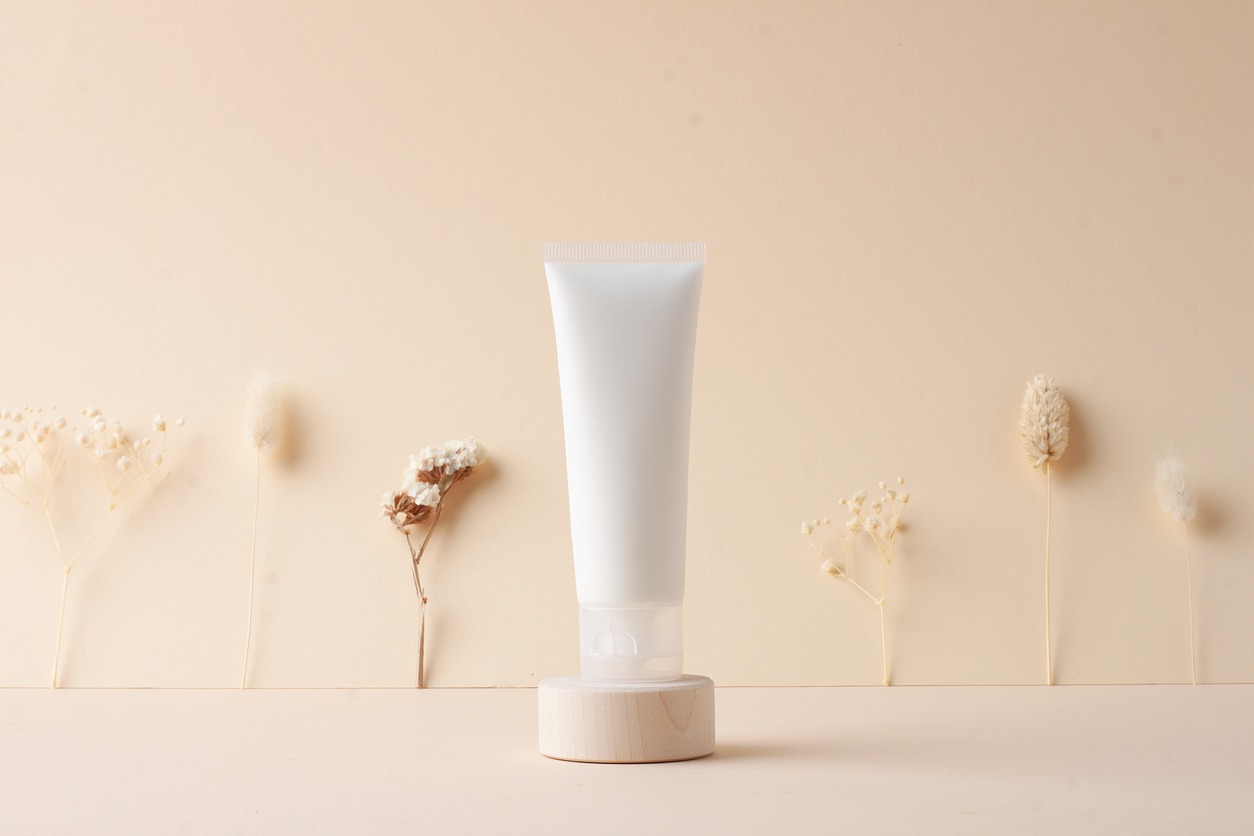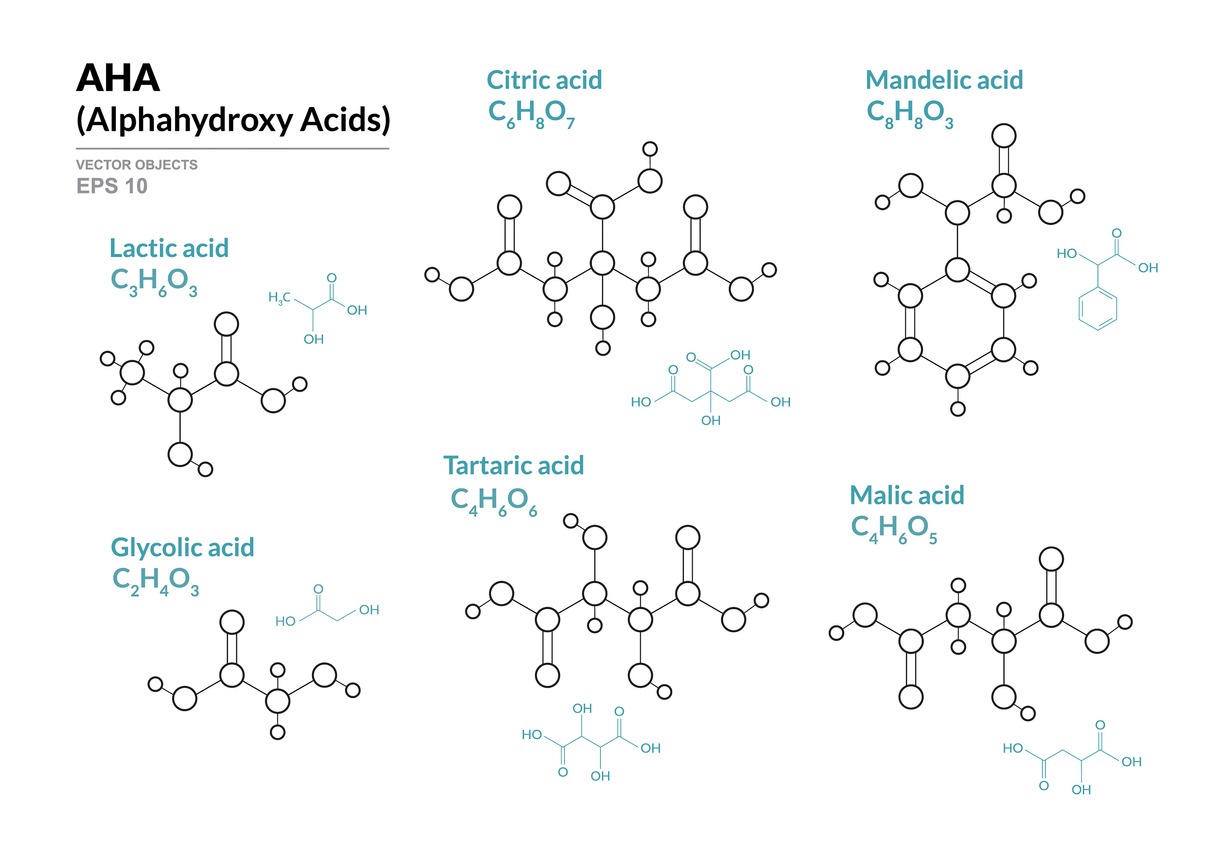In the area of skincare, a range of various acids are frequently employed. We’re prepared to guess that at least one of the products you’re now using has some kind of acid if you take a quick check at the ingredients. While all skincare acids have some characteristics in common, primarily the ability to serve as chemical exfoliants, they are not all made equal. Alpha-hydroxy acids, beta-hydroxy acids, and polyhydroxy acids are the most common classifications. (More often known by their separate abbreviations, AHAs, BHAs, and PHAs.) But there’s no doubt that AHAs are the best of the three. Dermatologists praise them for far more than simply their exfoliating power because they contain a variety of acids that cater to every skin type and complexion issue.
What are Alpha-Hydroxy Acids (AHAs)?
Most frequently generated from plant-based sources, alpha-hydroxy acids are a class of acid compounds. There are many different kinds, but the most popular ones are glycolic (produced from sugarcane), lactic (derived from sour milk), citric (derived from lemons), and malic (derived from apples). They all operate as chemical exfoliants on the skin’s surface, but they vary in size, which affects penetration and efficacy.
Its effectiveness increases with molecule size because smaller molecules penetrate the skin more deeply. On the other hand, if your skin is already sensitive to begin with, enhanced efficacy can also mean an increased probability of irritation. The kind of alpha-hydroxy acid you select, its concentration, and the product it comes in are all crucial for this reason.
Types of AHAs
There are several distinct acids that fall under the AHA category, each of which functions differently:
-
- Glycolic Acid: Sugarcane is the source of glycolic acid, which is great for exfoliating dead skin cells, balancing skin tone and texture, and stimulating the production of collagen. Since it is the smallest molecule in the group, it can penetrate the skin more easily. Additionally, it directly affects the activation and growth of fibroblasts, which are the cells that generate collagen and lessen wrinkles and fine lines.
- Lactic Acid: Lactic acid generated from milk is gentler on the skin than glycolic acid and is frequently recommended for skin types with more sensitivity because of its larger molecule size, which makes it more difficult to penetrate deep within the skin. Because the acid in sour milk has a smoothing effect on the skin, Cleopatra is claimed to have taken baths with it. Additionally, it thickens and strengthens the skin, aids in minimizing wrinkles and fine lines, and lessens acne by reducing bacteria.
- Citric Acid: As its name suggests, this citrus-fruit derived AHA gives the skin a decent amount of antioxidants and promotes skin cell turnover. Citric acid exfoliates and has astringent qualities, therefore it works well on oily skin.
- Malic Acid: A mild AHA that works well for mild exfoliation, brightening the skin, and keeping the pores free of blocking debris, pollution, oil, and dead skin is malic acid, which is derived from apples and other fruits. Malic acid pairs well with other AHAs for a stronger punch because of its mild nature. It can also act as a humectant to keep the skin moisturized.
- Tartaric Acid: Although tartaric acid is more popular in the beauty industry, it has long been present in foods like grapes and tamarinds. It works well to provide moisture because it is a mild exfoliant that also aids in binding water to the skin. It also regulates the pH of your product and keeps the stability of your beauty products.
How AHAs Work
AHAs have a limited ability to penetrate skin because they are water soluble. Some function on the skin’s surface while others penetrate further into the skin, depending on its molecular structure.
According to Dr. Zeichner, a board-certified dermatologist in New York City [1], “Alpha hydroxy acids function by altering the calcium content in the outer skin layer to dissolve connections between skin cells so they may be shed more easily.” Each type of acid also has some degree of exfoliating, moisturizing, and brightening abilities to enhance the appearance and health of the skin.
1. Exfoliation
AHA’s ultimate result is exfoliation. All AHAs offer some level of chemical exfoliation to remove surface-layer dead skin cells. The stratum corneum, the part of the skin that is in contact with the environment, is made up of dead cells that adhere before eventually falling off. Desmosomes and the link between these cells are weakened by AHAs, which also promotes cell desquamation. This procedure starts the skin-repair process, which boosts cell development and releases cytokines (growth and repair factors). The skin layers are renewed through exfoliation, making the skin appear more youthful with fewer wrinkles and fine lines.
For the most effective exfoliation, choose a smaller molecule, such as glycolic acid. AHAs can enhance radiance and brightness by assisting the skin in removing dead surface cells. Light can better reflect off the skin’s surface when the dead cells are eliminated. The less dead skin that is present on the skin’s surface, the smoother it looks and the better it can reflect light for that radiant, lit-from-within look.
The risk of irritation increases with decreasing AHA molecule size and increasing acid efficacy and strength. Therefore, people with sensitive skin or conditions like rosacea should use glycolic acid products with caution.
2. Hydration
Although it seems contradictory, several AHAs have a history of successfully hydrating skin. Because of its humectant qualities, lactic acid acts as a sponge to hydrate the skin.
3. Collagen Stimulation
AHAs are popular among experienced dermatologists due to their ability to stimulate collagen benefits. They cause the skin to sustain tiny trauma, which sets off a wound healing response and increases collagen formation. Some AHAs can work their magic on collagen by penetrating deeper into the skin due to their smaller size.
4. Pigmentation and Discoloration
AHAs also aid in fading stubborn pigmentation brought on by melasma or acne. AHAs have a lightening effect on the skin by removing the layer of dull, dead skin cells, which is helpful for hyperpigmentation brought on by acne scarring. Additionally, it clears up pores and lessens inflammation, both of which are factors in acne.
5. Antioxidant Benefits
Citric acid is one AHA that receives praise for its antioxidant properties and ability to prevent free radical damage.
Concentrations of AHAs
Utilizing AHAs is meant to enhance the skin, not to overly exfoliate, burn, irritate, or inflame it. Every AHA has a concentration that is suitable for use on the face, body, or both.
The formulation’s pH affects the free acid’s bioavailability. A product with a neutral pH is essentially ineffectual, while those with a lower pH formulation contain more free acid. In exchange for being weaker, buffered glycolic acid formulations offer a delayed release of the acid to greatly lower the likelihood of discomfort.
AHAs can be utilized as an in-office chemical peel at higher concentrations. For example, non-buffered glycolic acid in-office chemical peels range in concentration from 30% to 70%. The initial glycolic acid concentration is chosen based on the patient’s tolerance, skin condition, and sensitivity.
AHAs generally work well with other skincare ingredients, especially peptides. Retinol, on the other hand, is a component you should use with caution when combining with AHAs. It is recommended by dermatologists to alternately use AHA and retinol. Additionally, applying too many acids to the skin at once might result in problems with irritation, peeling, and redness. The same general principle also applies to beta hydroxy acids like salicylic acid.
Reminder
Always use sunscreen every day when using AHAs because they can make you more susceptible to sunburn.



